The willow tree has long stood as a quiet guardian in nature, its flowing branches swaying gently in the breeze, whispering stories of resilience, healing, and transformation. Revered in ancient lore and cherished in modern spiritual practices, the willow tree invites us to reflect deeply, release emotional burdens, and remain grounded through life’s many changes. Whether you find yourself beneath its arching limbs or simply admire its elegance from afar, this tree carries a sacred energy that speaks to the soul. In this guide, we’ll explore the hidden spiritual meanings of the willow tree and how its symbolism can inspire peace, protection, and personal growth in your everyday life.
Table of Contents
Key Takeaways
- Resilience in Adversity
The willow tree teaches strength through softness—bending with the storm rather than breaking, showing us how to endure with grace. - Emotional Healing
Known for comforting the grieving and the emotionally overwhelmed, the willow encourages honest expression and emotional release. - Symbol of Renewal
Fast-growing and capable of regenerating from broken branches, the willow represents rebirth, fresh starts, and personal transformation. - Connection to Water and Flow
Always found near rivers and lakes, the willow tree symbolizes the emotional and intuitive flow of life—reminding us to stay open and adaptable. - Mystical and Protective Qualities
Deeply rooted in folklore, the willow is linked to intuition, dreams, and spiritual shielding from negative energy. - A Muse for Creativity
From ancient poetry to modern art, the willow tree inspires imagination and soulful expression.
What Does the Willow Tree Symbolize?
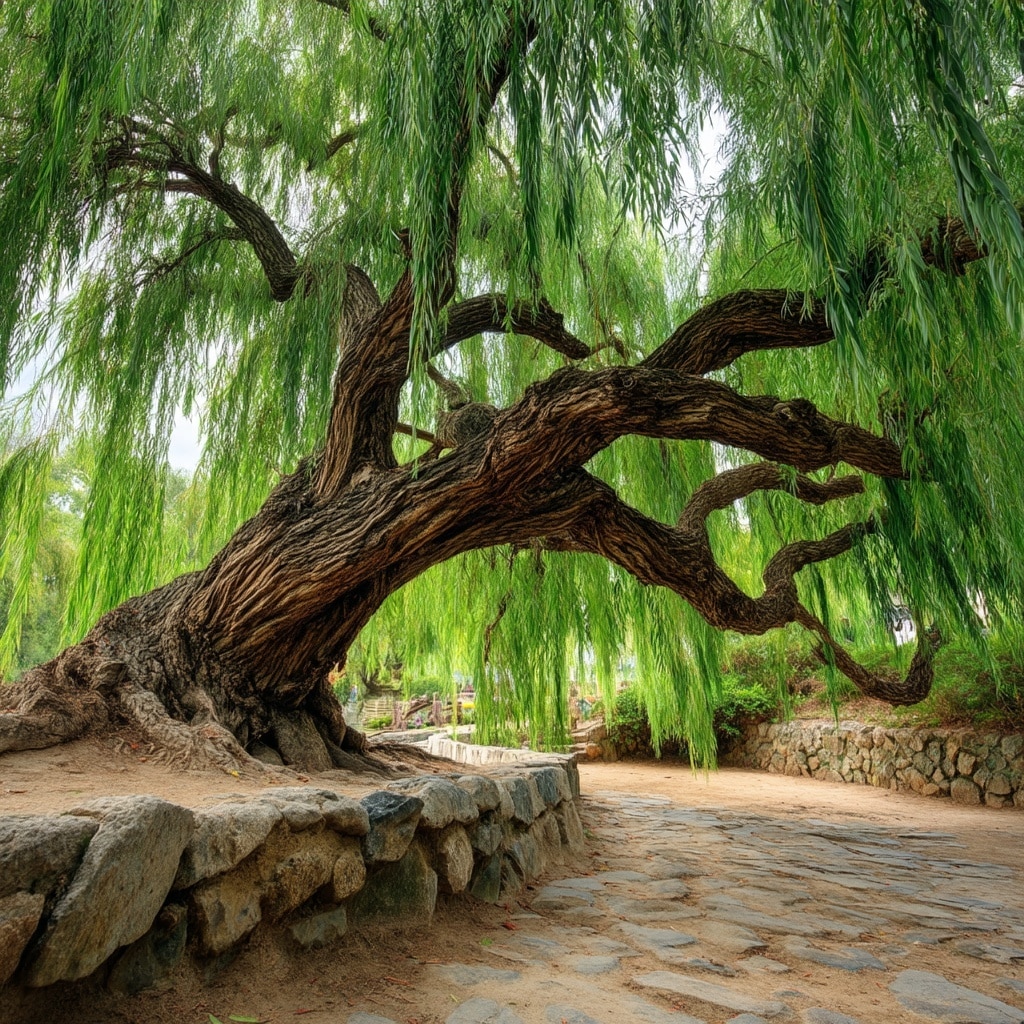
The willow tree symbolizes adaptability, emotional depth, and renewal. Its drooping branches and flexible form remind us that strength doesn’t always come from rigidity—it often lies in the ability to bend without breaking. Through storms and high winds, the willow endures, teaching us that resilience is rooted in surrender, not resistance.
Culturally, the willow has long been seen as a bridge between realms—life and death, earth and spirit, past and present. In many traditions, it’s planted near sacred sites or burial grounds to offer peace and passage for the soul. Its association with water deepens its symbolic link to emotion, intuition, and healing, reflecting how our inner tides shape our spiritual journey.
From ancient myths to modern mindfulness practices, the willow tree continues to be a symbol of calm strength, emotional release, and deep-rooted wisdom. Its presence encourages us to let go of burdens, flow with life’s changes, and trust in the quiet power of nature.
The Willow Tree and Emotional Healing

Few trees offer the emotional comfort of the willow tree. Its gentle sway and shaded canopy have long been associated with inner peace and reflection. In times of sorrow or emotional fatigue, many are drawn to the willow’s quiet presence as if it understands the weight of what cannot be spoken.
Symbolically, the willow encourages us to feel deeply rather than suppress emotions. Just as its branches flow downward like falling tears, the tree reminds us that releasing pain—through crying, journaling, or simply being still—is not weakness but healing. For centuries, willow bark was used as a natural remedy for physical pain, but its spiritual medicine lies in how it soothes emotional wounds.
If you’re grieving, overwhelmed, or navigating a difficult transition, spending time with a willow—either in nature or in meditation—can offer grounding energy. Imagine its long roots anchoring you while its limbs shield you from external chaos. The willow tree doesn’t judge your emotions—it honors them, teaching that healing begins with acceptance.
Why Is the Willow Tree Linked to Water?

The willow tree is deeply connected to water—physically, symbolically, and spiritually. Found thriving near rivers, lakes, and wetlands, its roots reach deep into moist soil, drawing strength from flowing currents. This natural preference gives rise to its rich symbolism in many cultures: water represents emotion, intuition, and the subconscious, and the willow mirrors this through its form and energy.
Where water flows, the willow grows. Its presence reminds us that life isn’t static—it moves, changes, and evolves just like a stream. The tree invites us to embrace emotional currents rather than resist them, trusting that healing and clarity often emerge when we let ourselves feel fully.
In spiritual practice, the willow tree is often used in rituals involving emotional release, dreamwork, or connecting with the divine feminine. Just as water reflects the sky, the willow helps us reflect on our inner landscape. Its bond with water teaches us to stay emotionally fluid—rooted, yet responsive—and to honor our inner tides without shame or fear.
The Willow Tree in Folklore and Myths
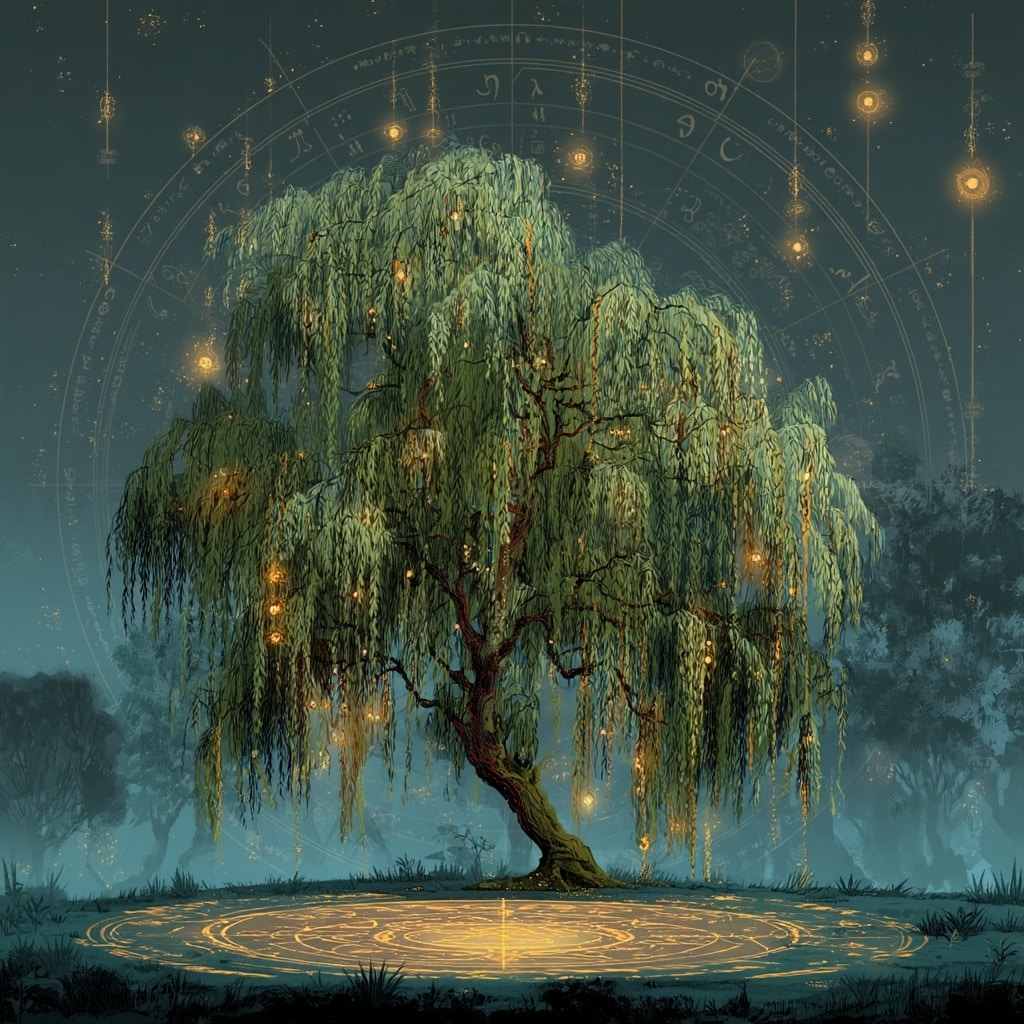
Throughout history, the willow tree has held a sacred place in folklore, mythology, and spiritual traditions across the globe. In Celtic culture, it was revered as a tree of intuition and inspiration. Poets and bards believed the willow opened the mind to creativity and wisdom, and many Druidic ceremonies were held beneath its branches during moon rituals.
In Native American traditions, the willow was viewed as a healer. Tribes used its bark to make teas for reducing pain and fever, but they also believed the tree held spiritual energy that could bring rain, guide dreams, or protect against unseen forces. It was seen as both a physical and mystical remedy.
In Chinese mythology, the willow tree symbolizes immortality and the soul’s eternal journey. Paintings often depict willows near water, emphasizing harmony between humanity and nature. Meanwhile, in ancient Greece, the willow was linked to grief and mourning, commonly planted near graves as a symbol of remembrance and emotional passage.
These stories reveal the willow not just as a tree, but as a spiritual companion—one that connects the seen and unseen, the emotional and the eternal. Its folklore continues to inspire those seeking comfort, guidance, and a deeper connection with the natural world.
How the Willow Tree Inspires Growth and Renewal
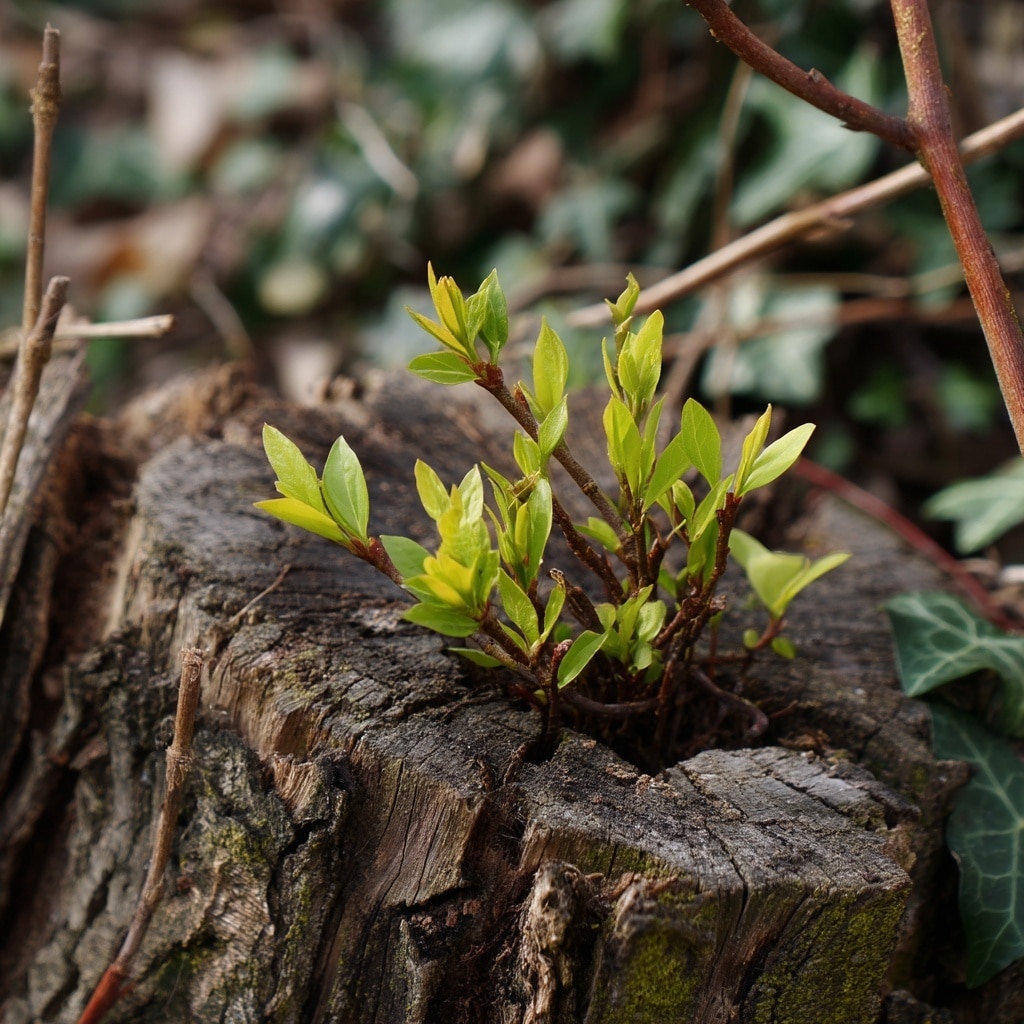
The willow tree is a living symbol of life’s ability to begin again. Known for its rapid growth and remarkable resilience, it can sprout fresh shoots even after being cut back or damaged. This regenerative nature makes the willow a powerful metaphor for personal growth, healing, and new beginnings.
Every spring, its branches burst with vibrant green leaves, signaling a fresh start after the stillness of winter. This natural cycle reflects our own ability to rise from periods of rest, pain, or loss and emerge stronger. When we feel stagnant or broken, the willow reminds us that regrowth is always possible, even from what seems beyond repair.
Spiritually, the willow tree invites us to trust in our own ability to evolve. Whether you’re healing from emotional wounds, setting new intentions, or stepping into a new phase of life, the willow offers quiet encouragement: your roots are strong, and your future is fertile.
To embrace this energy, spend time in nature, set gentle goals, or simply allow yourself space to begin again. Like the willow, growth doesn’t require force—it requires presence, patience, and faith in what lies ahead.
The Mystical Powers of the Willow Tree

For those attuned to energy, symbolism, or the unseen realms, the willow tree is much more than a graceful part of the landscape. Many spiritual paths regard it as a conduit to the mystical—a tree that can amplify intuition, protect from negative energy, and guide dreamwork and inner vision.
Shamans and healers across cultures have used willow wood and branches in spiritual rituals, believing the tree helps bridge the physical and spiritual worlds. Sleeping under a willow is said to invite vivid dreams, often filled with symbolic meaning or messages from the subconscious. The swaying movement of the branches is thought to stir the imagination and open psychic pathways.
In folk magic, willow wands are used for divination and healing. Some carry pieces of willow tree wood for protection, intuition, or guidance during spiritual work. Others find simply being near a willow to be grounding and energetically cleansing.
Even if you don’t follow mystical traditions, the tree’s calming presence and graceful form can feel enchanted—like stepping into a moment outside time. The willow tree invites you to listen closely, trust your instincts, and allow the mysteries of life to unfold naturally.
The Willow Tree as a Symbol of Protection
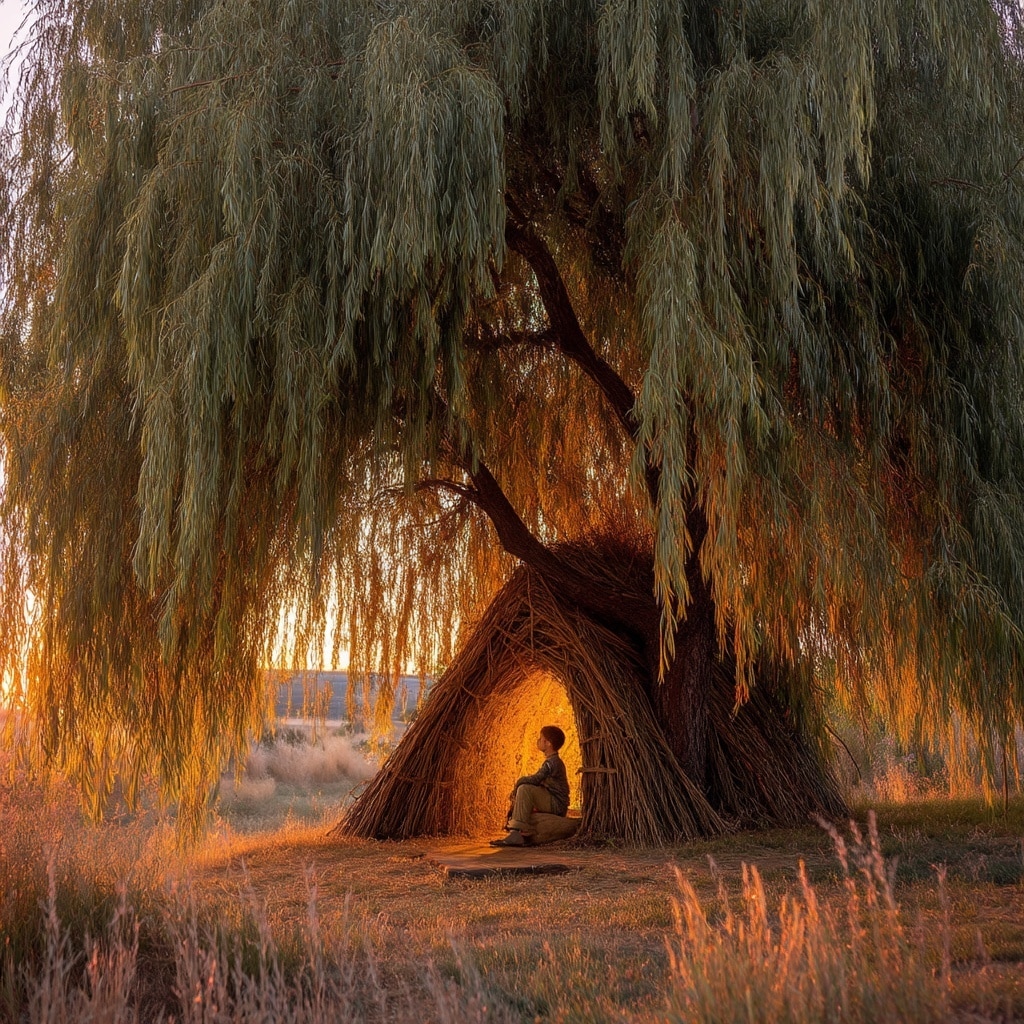
While the willow tree is often admired for its beauty and softness, it also carries a strong, protective energy. In many traditions, the willow has been seen as a guardian tree, shielding people from spiritual harm, emotional turmoil, and even physical danger.
Its sweeping branches form a natural canopy—an umbrella of comfort that offers shelter from the elements. This physical protection mirrors the tree’s symbolic role as a spiritual safeguard. In some cultures, planting a willow tree near the home is believed to ward off negative forces and attract peace. Its presence alone can feel like a quiet sentinel, standing watch over your space and spirit.
Many modern spiritual practices honor the willow’s protective nature by using dried branches above doorways, crafting talismans from its wood, or sitting beneath its shade for grounding and safety. The tree’s energy helps us feel shielded, not just from outer chaos but from the heavy emotions that often drain our energy.
Whether you believe in energetic protection or simply find peace in nature, the willow tree reminds us that we’re never truly alone. There is strength in softness, and safety in surrendering to what soothes the soul.
Lessons on Resilience from the Willow Tree
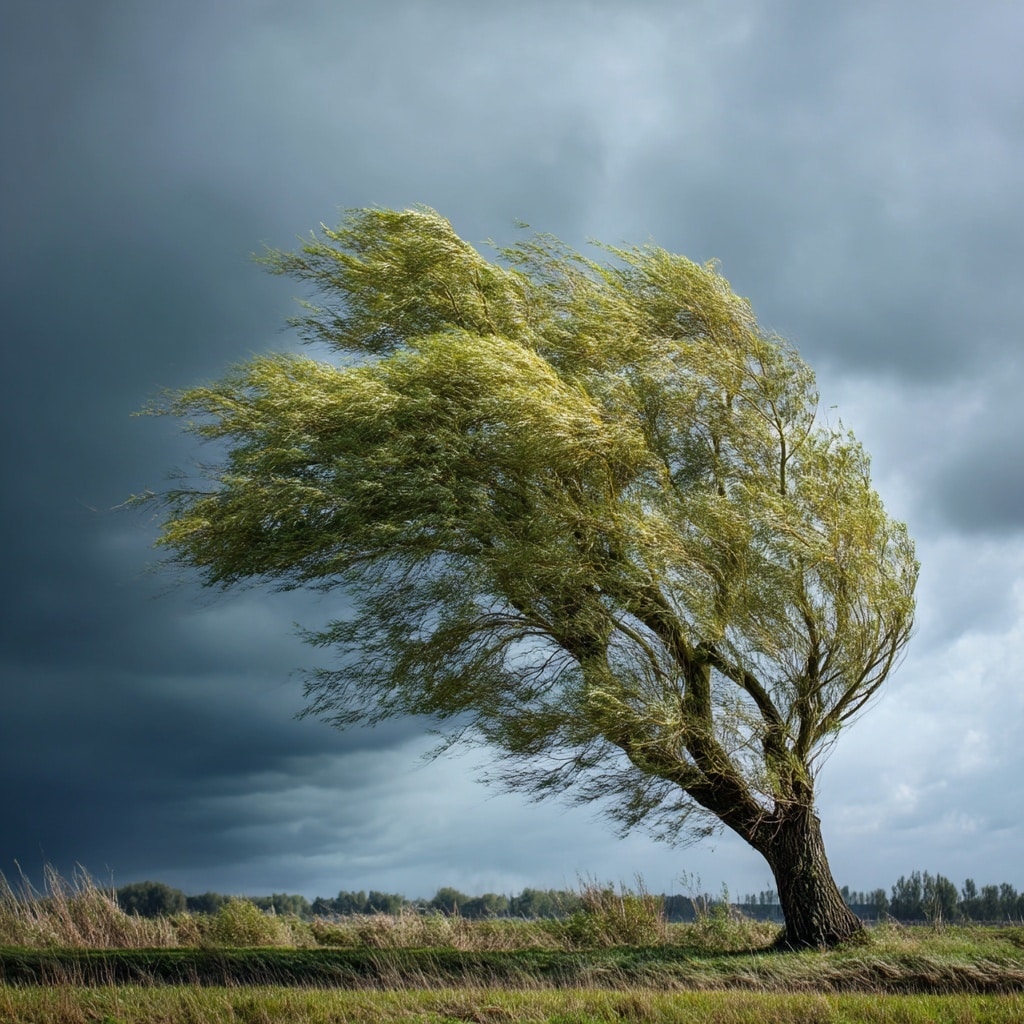
The willow tree teaches one of nature’s most profound spiritual lessons: true resilience lies not in resistance, but in flexibility. In high winds and heavy rains, the willow bends gracefully, never fighting the storm—only flowing with it. This gentle strength allows it to survive conditions that might break more rigid trees.
In our lives, we often equate strength with control or toughness. But the willow shows us another path: adapting, softening, and moving with life’s challenges instead of against them. When plans change, when heartbreak strikes, or when stress overwhelms us, we can look to the willow as a quiet guide—reminding us that resilience is about endurance, not force.
Spiritually, this flexibility symbolizes emotional intelligence, patience, and wisdom. It’s not about giving up or giving in, but about knowing when to yield so that you can stay grounded and whole. The willow tree doesn’t break—it bends, recovers, and continues growing.
Next time life throws something unexpected your way, remember the willow. Let its spirit remind you that softness is not weakness—it’s survival in its most elegant form.
The Role of the Willow Tree in Art and Literature
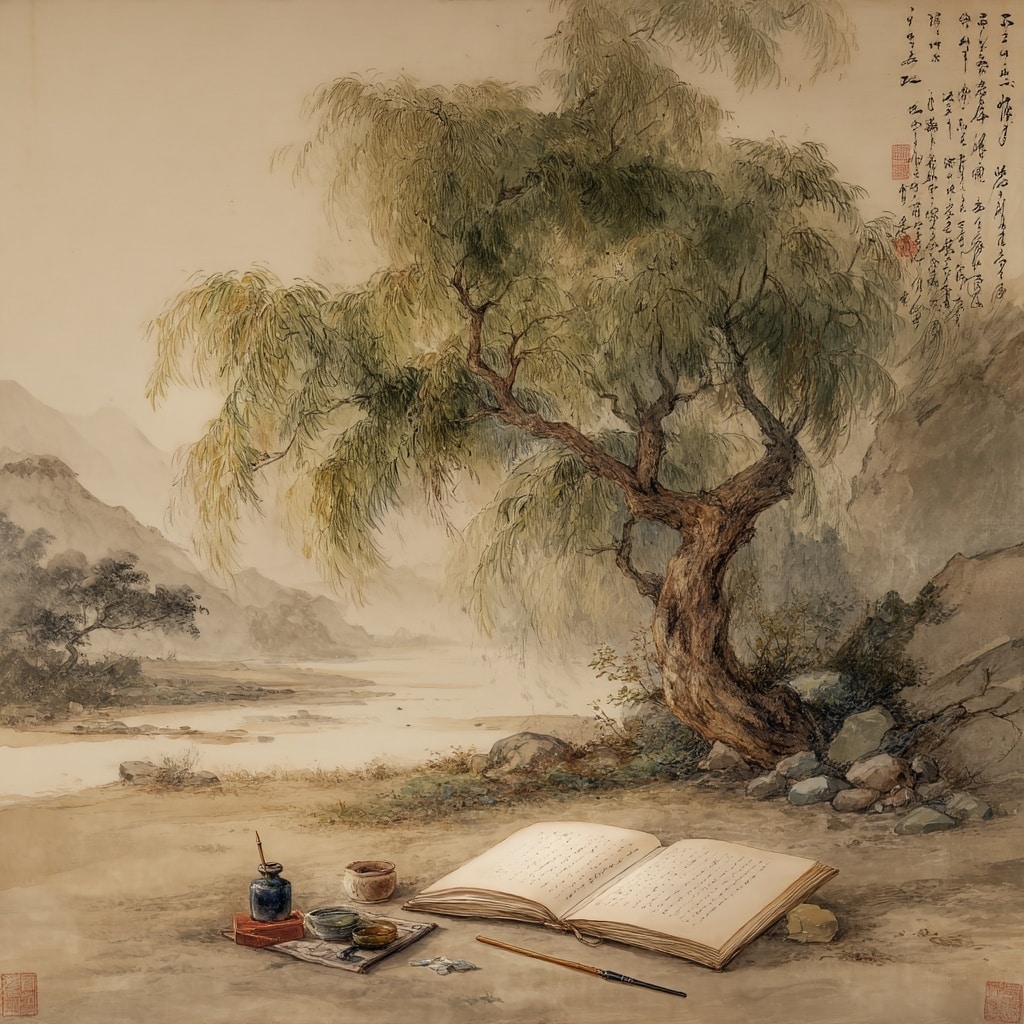
The willow tree has long captured the imagination of artists, writers, and poets across cultures. Its graceful form, sweeping branches, and emotional symbolism make it a natural muse for creative expression. Whether representing sorrow, peace, or transformation, the willow brings depth and beauty to countless works of art and literature.
In classical poetry, the image of the “weeping willow” is a powerful metaphor for grief and longing. Its drooping limbs evoke a quiet mourning, often used to express loss, remembrance, or emotional vulnerability. Yet the willow is just as often used to portray hope and recovery—its ability to regrow after being cut down is a favorite symbol for rebirth.
In Japanese woodblock prints, the willow often appears beside flowing rivers or moonlit scenes, reflecting themes of impermanence and serenity. In children’s books, willow trees are depicted as wise, gentle beings—offering shade, shelter, or guidance to young characters.
From Shakespeare to contemporary fiction, the willow tree continues to inspire. It’s more than a backdrop—it’s a character, a teacher, and a mirror to the human heart.
How to Incorporate Willow Energy into Your Life

Bringing the energy of the willow tree into your life doesn’t require a forest—it begins with intention and presence. Whether you’re seeking emotional healing, spiritual connection, or simply a deeper sense of peace, the willow offers gentle guidance you can integrate into daily life.
Spend time near water and trees. If you live near a body of water, find a willow and sit quietly beneath its canopy. Let its stillness help calm your thoughts. If you don’t have access to one, visualizing the tree in meditation can be just as powerful.
Use symbols in your space. Decorate your home or altar with willow branches, wood carvings, or artwork that features the willow tree. These physical reminders help keep its energy present and grounding.
Journaling and mindfulness. Write about what the willow means to you. Reflect on where you might need more flexibility in your life. Use the tree’s symbolism as a lens for emotional awareness.
Spiritual tools and rituals. Willow wood is often used in ritual tools like wands, charms, or protective talismans. Carrying a small piece of willow or keeping it near your bed may promote clarity in dreams or emotional balance.
Ultimately, the willow tree reminds you to stay rooted, stay open, and trust in the quiet wisdom of nature.
FAQs

What does the willow tree mean spiritually?
The willow tree represents flexibility, emotional healing, renewal, and spiritual growth. It teaches us to flow with life rather than resist it.
Why is the willow tree associated with water?
Because it grows near rivers and lakes, the willow tree symbolizes emotion, intuition, and life’s constant movement—qualities often linked to water in spiritual symbolism.
Can the willow tree help with emotional healing?
Yes. Spiritually and energetically, the willow tree supports emotional release and reflection. Its calming presence can provide comfort during grief or emotional transitions.
What cultures include the willow tree in their mythology?
The willow appears in Celtic, Native American, Greek, and Chinese traditions—often tied to healing, protection, wisdom, and the spiritual world.
How can I connect with willow tree energy?
Spend time in nature, meditate beneath a willow, journal about its symbolism, or bring physical reminders (like branches or artwork) into your space.
Conclusion
The willow tree is more than a beautiful feature of the landscape—it’s a living symbol of emotional wisdom, resilience, and renewal. From ancient mythologies to modern spiritual practices, it continues to offer comfort, guidance, and quiet strength to those who pause to listen. Whether you connect with its energy through meditation, ritual, or simply by observing it in nature, the willow gently teaches us how to bend without breaking, feel without fear, and grow again—even after loss.
Let its branches remind you: your softness is your strength, your emotions are sacred, and your spirit can always rise.







